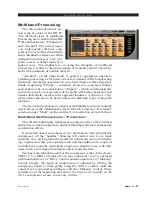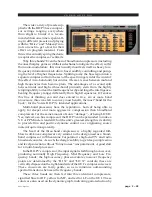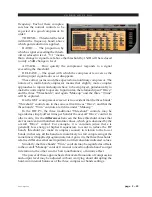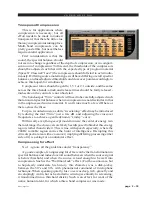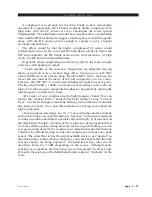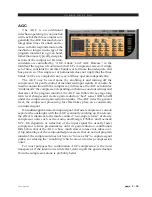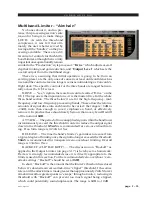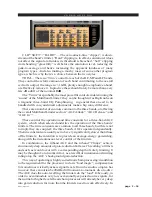
V O R S I S H D P 3 G U I
page 2 – 19
HD P3 / Aug 2006
M/S microphones
The name “M/S” in fact
comes from “Mid / Side” - a
stereo microphone technique
where instead of a left and right
sensing pair of microphones,
there is a single forward-sensing
(or omni) microphone, and a sec-
ond figure-of-eight sensing mi-
crophone aimed sideways. Par-
ticularly in classical and other
acoustic-space-rich style record-
ings, this technique offers lati-
tude for easy remote-pattern and
stereo image manipulation, and
far better sound-stage positional
accuracy than possible with a
conventional pair of cardioid or
super-cardioid microphones.
This sum/difference pair may
be converted to conventional ste-
reo by either the “M/S” switch at
the input or output of the HD P3; the latter offers the possibility of
differential processing (meaning different between sum and difference
paths) way beyond the usual “width” control afforded by merely adjusting
their relative gains.
Mono Airchain Processing (e.g. for AM)
The “M/S” switch will present a mono sum of the applied left and right
signals from a stereo production or air-suite into the “Left”, or “A” path of
the HD P3. The “Right” or “B” path would be ignored in this case.
FM Airchain Processing
Particularly in conjunction with the earlier described internal pre-
emphasis, the “sum” and “difference” signals required for stereo multiplex
encoding may be created within the box; this, again like local pre-
emphasis, allows greater control over the ultimately broadcast signal.
Sum / Difference Processing for fun
With both the “Input” and “Output” “M/S” switches set, a stereo source
will emerge from the box in stereo, yet the whole gamut of intervening
processing will operate on their sum and differences. If the box is kept in
“Stereo” mode, with identical processing occurring on the two paths, the
net effect will be substantially the same as if the “M/S”ing hadn’t been
done (dynamics tend to act slightly differently when driven 6dB harder, as
will occur on a substantially “mono” source, but otherwise it’s pretty much
a wash). If, however, once baseline configuration of the two paths has been
done in “Stereo” mode, the HD P3 is then made to operate in “Two Monos”
mode, things get interesting.























